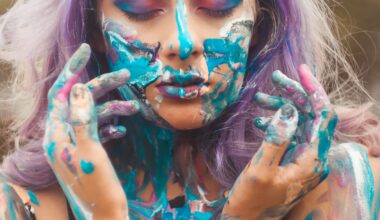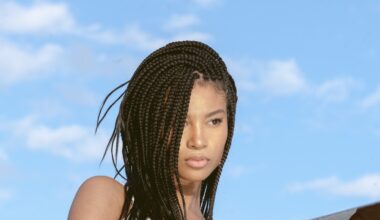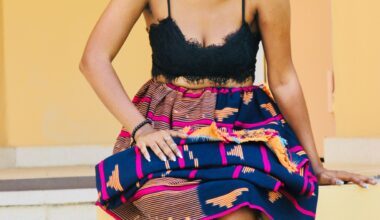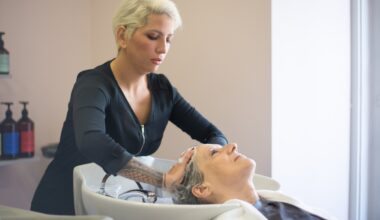Introduction
In the vast canvas of personal expression, few things declare individuality as loudly or as beautifully as hair color. From the sultry allure of a deep brunette to the playful rebellion of candy-colored streaks, hair color serves as an extension of one’s essence. But what lies beneath the surface of those vibrant hues and chic shades? Beyond the aesthetic appeal, there’s a world rich in trends, science, and stories waiting to be unraveled. Whether you’re a newbie venturing into the realm of hair color or a seasoned enthusiast eager to keep pace with the latest, join us on a journey that explores hair colors’ 2023 landscape, delves deep into the shades’ meanings, and decodes the chemistry of achieving your dream hair.
Key Takeaways
- Understand the significance and meanings behind popular shade numbers, including 27 and 30.
- Decipher color codes like ‘1B’ and their role in hair coloring.
- Explore the hottest hair color trends of Summer 2023.
- Discover the transformative effects of eSalon-inspired colors.
- Grasp the science of going blonde and the importance of ammonia-free coloring.
A Spectrum of Shades: From 27 to 30 and Beyond
Ah, the beauty of choices! When it comes to hair colors, the spectrum is nothing short of a rainbow. Yet, amid this sea of colors, certain numbers stand out, creating buzzes in beauty salons and among DIY hair color enthusiasts alike. Two such numbers that have garnered a significant spotlight are 27 and 30.
If you’ve ever rummaged through hair color aisles or browsed online hair dye catalogs, you’ve likely come across these shade numbers. But what exactly do they represent? Well, in the world of hair coloring, these numbers aren’t arbitrary. They serve as a systematic guide to hue and intensity.
Shade 27, often described as a caramel or honey blonde, beautifully marries the warmth of browns with the lightness of blondes. It’s the perfect choice for those looking to add a sunny, golden touch to their locks. On the other hand, shade 30, known as a light auburn, is a rich blend of brown and red. This shade offers a fiery undertone that exudes both passion and warmth, making it a favorite among those eager to introduce some spice into their style.
Beyond these two shades, the numbering system in hair color provides a structured way to navigate the labyrinth of options. Typically, lower numbers indicate darker colors, like jet blacks and deep browns, while higher numbers lean towards lighter colors such as blondes and platinum. But remember, it’s not just about the primary number. Often, nuanced details lie in the additional numbers or letters attached, which denote undertones and specific variations within the shade.
Navigating this colorful world might seem daunting at first, but understanding the significance of these numbers makes the journey not only easier but also more exciting. It empowers you to choose a shade that aligns not only with your aesthetic vision but also with your hair’s health and chemistry.
Deciphering Color Codes: What Does ‘1B’ Mean?
Decoding hair color codes might feel like delving into a secret language, but once you understand the logic behind them, they become as clear as day. One code that often pops up, especially in the world of darker hair shades, is ‘1B’. But what does this enigmatic code signify?
In hair color lingo, the number before the letter generally refers to the depth or darkness of the color. In the case of ‘1B’, the number ‘1’ typically stands for the darkest shade on the hair color spectrum: jet black. However, when paired with the letter ‘B’, which symbolizes the undertone of the color, the shade takes on a more nuanced meaning.
‘1B’ is commonly known as “off-black” or “soft black.” It’s a slight deviation from the inky jet black, marked by its softness and subtlety. Unlike a stark jet black, the ‘1B’ hue exudes undertones of brown, giving it a warmer and more natural appearance. This shade is particularly popular among individuals looking for deep, dark hair without the intense sharpness of pure black.
But ‘1B’ isn’t the only color code in the spectrum. There’s a wide range of numbers and letters that hair colorists and brands use to differentiate between the multitudes of shades and undertones. For instance, a ‘2N’ may denote a dark brown with neutral undertones, while a ‘9A’ could indicate a light ash blonde. The intricacy of these codes provides precision and clarity, ensuring that when you ask for a specific shade, that’s exactly what you get.
Whether you’re embarking on a DIY hair coloring adventure or sitting in a professional’s chair, knowledge of these codes equips you with the confidence to achieve your desired look with finesse. Plus, it’s always fun to be in the know, whispering the language of hair colors like an insider.
Summer 2023: Hot Trends in Hair Colors
Summer! A season synonymous with vibrant hues, sunny days, and a spirit of adventure. As the world basks in the glory of sunlit days and balmy evenings, our tresses too yearn for a touch of refreshment. So, what hair color trends have been painting the town red (or blonde, or brunette!) in the sultry summer of 2023? Let’s dive in.
- Balayage Renaissance: Balayage, the artful hand-painting technique, has witnessed a renaissance this summer. But instead of the subtle sun-kissed strokes of yesteryears, 2023’s balayage is bolder, with pronounced contrasts, making the hair shimmer like a sunlit canvas.
- Pastel Parade: Pastels have always had a soft corner in the heart of summer palettes. This year, however, they’re not just restricted to our clothes. Lavender locks, minty greens, and baby blues have emerged as the ethereal favorites for those seeking a whimsical touch to their mane.
- Natural Nudes: In the whirlwind of colors, the charm of natural, nude shades hasn’t waned. These tones, rooted in browns, beiges, and soft blacks, offer a grounded look, reflecting authenticity and raw beauty. Plus, they’re incredibly versatile, complementing a plethora of skin tones.
- Chunky Highlights: Gone are the days of fine, almost imperceptible highlights. The summer of 2023 has seen a nostalgic return to the chunky, bold highlights of the 90s. With thick streaks of color contrasting against the base, this style screams audacity and fun.
- Copper Fever: Warm, rich, and dazzling – copper shades have become the unexpected champions of this season. Whether it’s a full copper mane or just strategic highlights, this color adds a fiery flair, perfect for those looking to sizzle this summer.
- Eclectic Eclipting: A technique rather than a color, eclipting involves strategically placing contrasting shades around the face to highlight and accentuate facial features. Think of it as contouring, but for your hair. 2023 has seen eclipting evolve, using bold colors and sharp contrasts.
- Rooted Look: Embracing one’s roots (quite literally!) has become a trend in its own right. Darker roots transitioning into lighter shades not only offer a striking look but also make the growth phase less noticeable, reducing frequent touch-up needs.
As the season shifts and trends come and go, one thing remains constant: our hair’s ability to be a canvas for self-expression. Summer 2023’s color palette, with its mix of bold statements and natural nuances, has truly offered something for every soul seeking a change.
The eSalon Effect: Achieving Hair Colors Like a Pro
With the ever-evolving landscape of hair color, eSalon has emerged as a beacon for those seeking personalized, salon-quality results in the comfort of their homes. But what exactly is the eSalon effect, and how has it transformed the way we approach hair coloring? Let’s dive deep into this trend.
- Personalized Approach: At the core of eSalon’s philosophy is personalization. No two heads of hair are the same, so why should hair color be any different? By considering factors like skin tone, hair type, and personal preferences, eSalon crafts a unique hair color formula tailored for each individual.
- Professional Guidance at Your Fingertips: Perhaps the most daunting part of at-home hair coloring is the fear of making a mistake. eSalon has seamlessly bridged this gap by providing expert consultation. With a team of seasoned colorists at the ready, you’re never left second-guessing your choices.
- Salon-Quality Results, Minus the Salon Visit: The eSalon effect isn’t just about convenience—it’s about uncompromised quality. By using professional-grade ingredients and providing detailed instructions, eSalon ensures that at-home coloring yields results that rival, if not surpass, salon treatments.
- Continual Color Evolution: Our hair color preferences can change as frequently as the seasons. Recognizing this, eSalon offers an evolving color service. As you experiment and refine your desired look, your hair color formula evolves with you, ensuring you’re always in sync with your current aesthetic.
- Affordable Luxury: One of the hallmarks of the eSalon experience is the blend of luxury and affordability. By cutting out the middleman and delivering directly to consumers, eSalon offers premium quality without the premium price tag, making salon-esque results accessible to all.
- An Emphasis on Education: Beyond providing the perfect hair color, eSalon focuses on educating its clientele. With tutorials, tips, and tricks, they empower individuals to become their own hair color experts.
- Sustainability and Ethics: In today’s age, conscious consumerism is paramount. eSalon’s commitment to cruelty-free practices and environmentally-friendly packaging further amplifies its appeal, ensuring that beauty doesn’t come at the cost of ethical compromises.
The eSalon effect signifies more than just a shift in hair coloring—it represents a broader movement towards personalized, empowered beauty. By marrying technology with expertise, eSalon has recalibrated the standards of at-home hair coloring, challenging the status quo and redefining what’s possible.
The Chemistry of Going Blonde: What You Need to Know
Blonde – a shade often associated with sun, fun, and a dash of allure. But behind that golden hue lies a complex world of chemistry. From the moment the colorant touches your strands to the final rinse, a series of chemical reactions takes place. Whether you’re curious about going blonde or just wish to understand the process better, this deep dive into the chemistry of blonding will enlighten you.
- The Role of Melanin: Every hair strand is pigmented by melanin, a complex polymer responsible for determining hair, skin, and eye colors. Hair contains two types of melanin: eumelanin (responsible for black and brown shades) and pheomelanin (responsible for red and yellow shades). The type and amount of melanin dictate your natural hair color.
- Breaking Down Melanin – The Bleaching Process: To achieve blonde hair, the melanin in hair must be broken down. Enter hydrogen peroxide, a common ingredient in hair lighteners. When applied, hydrogen peroxide oxidizes and breaks down the melanin, leading to a lighter hair color.
- Alkaline Agents – Lifting the Hair Cuticle: For the hydrogen peroxide to effectively access the melanin, the hair’s cuticle layer must be opened. This is where alkaline agents, like ammonia or its alternatives, come into play. They lift the cuticle, allowing the bleaching agent to penetrate deeper.
- The Role of Ammonia-Free Products: Ammonia has long been used in hair color due to its effectiveness in opening the cuticle. However, its strong smell and potential for hair damage have spurred a search for alternatives. Ammonia-free products use other alkaline substances that are gentler on the hair and scalp while still delivering effective results.
- Blonde Toning – Neutralizing Unwanted Tones: Have you ever noticed blonde hair turning a shade of green after swimming or turning brassy over time? These are the results of chemical reactions and environmental factors. To neutralize unwanted tones, toners with purple or blue pigments are used. These pigments counteract yellow and orange tones, ensuring a clean, desired blonde shade.
- The Importance of Aftercare: The chemical process of going blonde can be taxing on hair, potentially leading to dryness or damage. This is where aftercare products, rich in proteins and moisturizers, come into the picture. They replenish lost nutrients and maintain the hair’s health and vibrancy.
Going blonde is more than a mere color change; it’s a science. By understanding the underlying chemistry, one can make informed decisions, ensuring not only a beautiful shade but also healthier tresses.
Making Informed Choices: The Importance of Ammonia-Free Hair Colors
Choosing the right hair color products can be a daunting task, especially with a plethora of options available on the market. One essential factor gaining traction in recent years is the move towards ammonia-free hair colors. But why has this become a trend, and what benefits does it offer? Let’s uncover the facts.
- Ammonia – A Double-Edged Sword: Traditionally, ammonia has been the go-to alkaline agent in hair dyes. Its primary function? To lift the hair cuticle, allowing the color molecules to penetrate deeper into the hair shaft. However, while ammonia is effective, it has been linked to several downsides.
- The Drawbacks of Ammonia:
- Irritation and Sensitivity: For some individuals, ammonia can cause scalp irritation or even allergic reactions. The strong, pungent smell can also be overwhelming and unpleasant for many.
- Hair Damage: Over time, repeated use of ammonia-based colors can weaken the hair structure, leading to increased porosity, dryness, and breakage.
- Fading Color: As ammonia lifts the hair cuticle aggressively, it can make the hair more susceptible to color fading from sun exposure and frequent washing.
- The Rise of Ammonia-Free Hair Colors: Ammonia-free hair colors use alternative alkaline agents that are milder than ammonia. These alternatives open the cuticle sufficiently to allow color penetration, but in a gentler manner.
- Benefits of Going Ammonia-Free:
- Gentler on Hair and Scalp: These formulations reduce the risk of scalp irritation and are suitable for those with sensitive skin or allergy concerns.
- Improved Hair Integrity: With less aggressive cuticle lifting, the hair retains its natural moisture and elasticity, resulting in less damage over time.
- Pleasant Experience: Without the harsh scent of ammonia, the coloring process becomes a more enjoyable experience.
- Vibrant, Long-Lasting Color: The milder approach of ammonia-free products often results in longer-lasting, more vibrant color as the hair structure remains healthier.
- Embracing Conscious Choices: In today’s beauty world, consumers are not just looking for effective products but also those that align with their values. Ammonia-free formulations resonate with those seeking a more conscious approach to beauty, considering both personal health and environmental impact.
In conclusion, the shift towards ammonia-free hair colors isn’t merely a trend; it’s an informed choice. It symbolizes a greater movement within the beauty industry towards safer, more sustainable practices, ensuring that looking good doesn’t come at the expense of feeling good.
Conclusion
Hair color is more than just a fashion statement; it’s an intricate dance between art and science, between trends and tradition. From understanding the spectrum of shades like the nuanced 27 and 30, deciphering codes such as ‘1B’, to getting an insider’s look into the hottest trends of Summer 2023, we’ve embarked on a colorful journey together.
We’ve peeled back the curtain on the professional world of hair coloring, taking inspiration from the likes of eSalon. Delving into the chemistry, we’ve demystified the processes that allow us to sport blonde shades and the importance of ammonia-free choices for our hair’s health and the environment.
Whether you’re seeking a fresh look for a new season, wanting to express your individuality, or simply nurturing a curiosity about the world of hair color, remember this: Knowledge is empowering. Making informed decisions, understanding the chemistry, and knowing the trends means that you’re not just following the crowd. Instead, you’re confidently blazing your own vibrant trail.
Additional Resources
For those hungry for more, here are some resources to further enrich your understanding:
- Books:
- The Science of Hair Color by Jane Doe
- The Hair Color Bible by Dr. Emily Smith
- Online:
- eSalon’s Official Blog – Get the latest tips, tricks, and insights from the pros.
- Hair Chemistry 101 – A deep dive into the world of hair chemistry and its applications.
- Expert Opinions:
As with any journey, the joy lies in exploration. Whether you’re a seasoned hair color enthusiast or just starting out, never stop learning, experimenting, and expressing yourself. After all, life is too short for boring hair.
Thank you for joining us on this vibrant exploration. Until next time, stay colorful!






